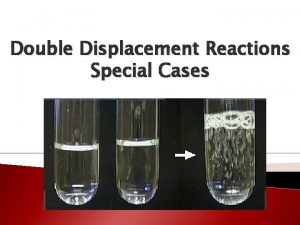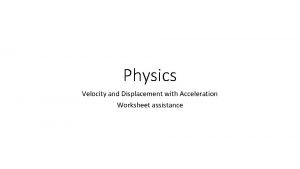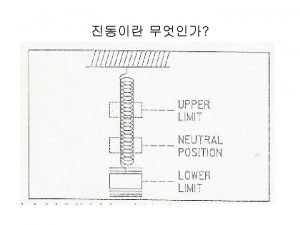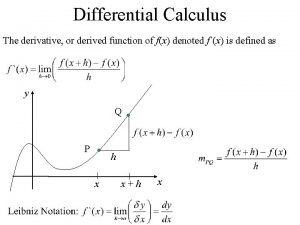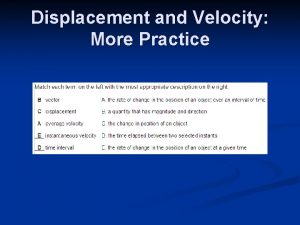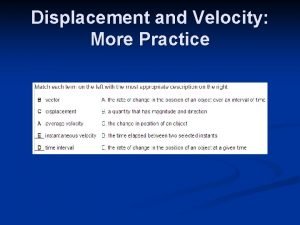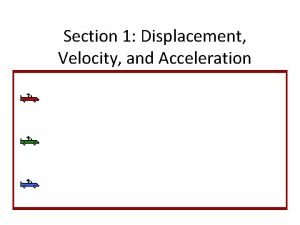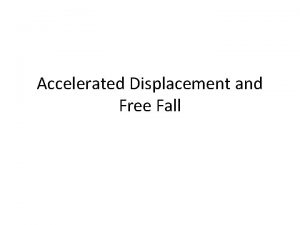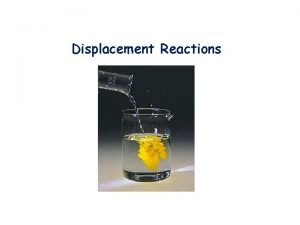Chapter 2 Section 1 Displacement and Velocity and








- Slides: 8

Chapter 2 Section 1 Displacement and Velocity and Speed • Velocity describes motion with both direction and magnitude (a numerical value). • Speed has no direction, only magnitude. • Average speed is equal to the total distance traveled divided by the time interval. Chapter menu Resources Copyright © by Holt, Rinehart and Winston. All rights reserved.

Chapter 2 Section 1 Displacement and Velocity Displacement • Displacement is a change in position. • Displacement is not always equal to the distance traveled. • The SI unit of displacement is the meter, m. Dx = xf – xi displacement = final position – initial position Chapter menu Resources Copyright © by Holt, Rinehart and Winston. All rights reserved.

Chapter 2 Section 1 Displacement and Velocity Average Velocity • Average velocity is the total displacement divided by the time interval during which the displacement occurred. • In SI, the unit of velocity is meters per second, abbreviated as m/s. Chapter menu Resources Copyright © by Holt, Rinehart and Winston. All rights reserved.

Chapter 2 Section 1 Displacement and Velocity Conceptual Problems (from lab) • A book is moved once around the edge of a tabletop with dimensions 1. 75 m x 2. 25 m. If the book ends up at its initial position, what is its displacement? If it completes its motion in 23 s, what is its average velocity? What is its average speed? • Car A travels from New York to Miami at a speed of 25 m/s. Car B travels from New York to Chicago, also at a speed of 25 m/s. Are the velocities of the cars equal? Explain. • A bus travels 280. km south along a straight path with an average velocity of 88. km/hr to the south. The bus stops for 24. minutes. Then it travels 210. km south with an average velocity of 75. km/hr to the south. A) How long does the total trip last? B) What is the average velocity for the total trip? Chapter menu Resources Copyright © by Holt, Rinehart and Winston. All rights reserved.

Chapter 2 Section 1 Displacement and Velocity Interpreting Velocity Graphically • If the velocity is constant, the graph of x vs t is a straight line. The slope indicates the velocity. Object 1: positive velocity Object 2: zero velocity Object 3: negative velocity Chapter menu Resources Copyright © by Holt, Rinehart and Winston. All rights reserved.

Chapter 2 Section 1 Displacement and Velocity Interpreting Velocity Graphically, continued Instantaneous velocity The instantaneous velocity at a given time can be determined by calculating the slope of the tangent line. Chapter menu Resources Copyright © by Holt, Rinehart and Winston. All rights reserved.

Chapter 2 Section 2 Acceleration Changes in Velocity • Acceleration is the rate at which velocity changes over time. • An object accelerates if its speed, direction, or both change. • The slope of the velocity-time graph is the average acceleration. Chapter menu Resources Copyright © by Holt, Rinehart and Winston. All rights reserved.

Chapter 2 Section 1 Displacement and Velocity Section Review • If a passenger train is traveling on a straight track with a negative velocity and a positive acceleration, is it speeding up or slowing down? • Sally travels by car from one city to another. She drives for 30. 0 min at 80. 0 km/hr, 12. 0 min at 105 km/hr and 45. 0 min at 40. 0 km/hr, and she spends 15. 0 min eating lunch and buying gas. – Determine the total distance traveled. – Determine the average speed for the trip. • Graph review wkst Chapter menu Resources Copyright © by Holt, Rinehart and Winston. All rights reserved.
 Single displacement vs double displacement
Single displacement vs double displacement Displacement velocity and acceleration worksheet
Displacement velocity and acceleration worksheet Vibration displacement velocity acceleration
Vibration displacement velocity acceleration Differential calculus
Differential calculus Relation between linear and angular quantities
Relation between linear and angular quantities Initial velocity and final velocity formula
Initial velocity and final velocity formula Formula of velocity
Formula of velocity Darcy's law hydraulic conductivity
Darcy's law hydraulic conductivity Final velocity initial velocity acceleration time
Final velocity initial velocity acceleration time
